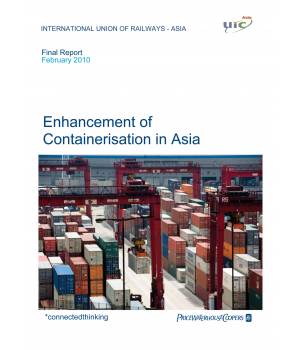
Enhancement of Containerisation in Asia
Over the past fifty years, the use of containers has revolutionised freight handling and helped grow international trade. As of 2007, approximately 90% of non-bulk international cargo moved by containers stacked on transport ships. Containerisation has progressed over time and across geographies along with the growth and rise of economies. In terms of development of associated infrastructure, container ports in the Unites States, Europe and Asian countries of Japan and South Korea were amongst the largest in the world around the 1970s and early 1980s. Subsequently with the economic growth of China and ASEAN countries, and their emergence as manufacturing hubs of the world, containerisation and development of container ports progressed rapidly in these countries and ports at Singapore, Shanghai and Hong Kong as emerged at major ports. As of 2007, 13 Asian ports figure in the list of top 20 ports of the world. International container movement relies extensively on maritime transportation, with road transportation being used for first-mile and last-mile connectivity. Though transportation of containers by railways is increasingly being used between key logistics facilities in a country (for instance, hinterland facilities and ports) and in certain cases across countries, transportation by railways for regular international movement of containers as such has been limited. Considering that certain countries in Asia are land-locked while some others have a huge geographical spread (like Russia, India and China), a larger role for railway transportation could potentially be targeted in future.
| Author | UIC |
| ISBN | |
| Pages | 326 |
Data sheet
- Language
- English
- Format
- Downloadable
- Edition date
- 01/02/2010
- Publication date
- 06/05/2014
- Page number
- 326
- Theme
- Asia-Pacific
- sku
- 190_41E/PDF
- Paper size
- 21 x 29,7cm
- Reference
- 190_41E
 Cookie preferences
Cookie preferences

